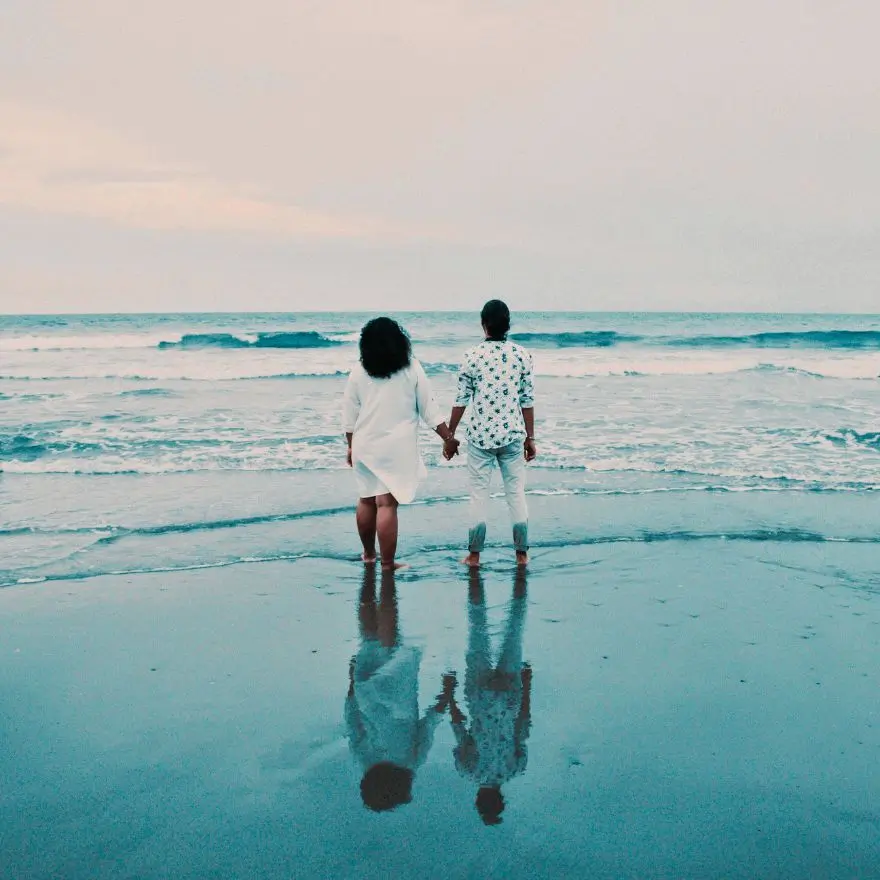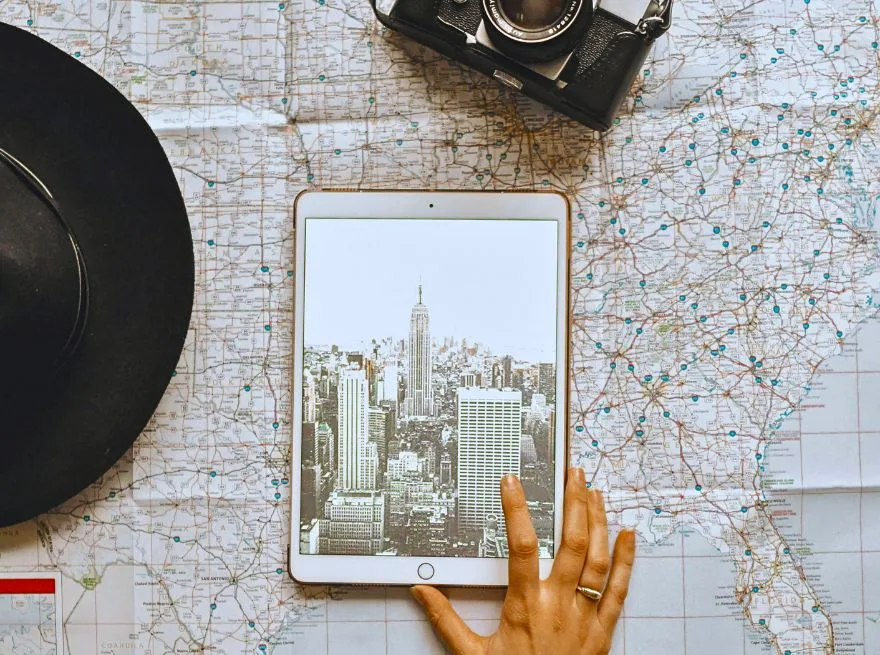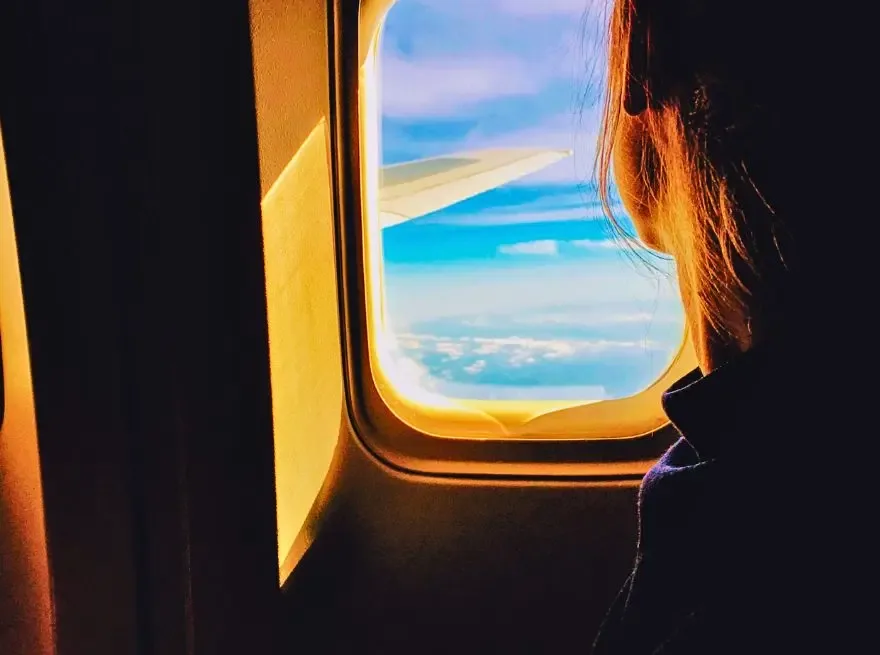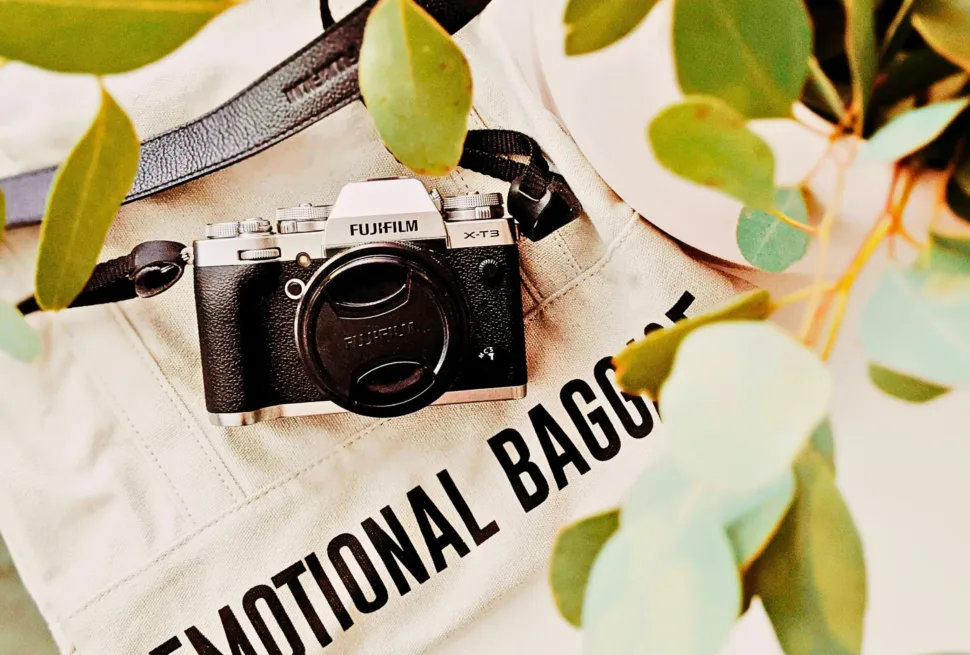From morning journaling to evening gratitude walks, gentle rituals that create home wherever you land.
There’s a particular kind of magic that happens when you wake up in a place where yesterday’s sunset was your first. The unfamiliar sounds filtering through the window, the different quality of light, the way even the air tastes foreign. Travel is intoxicating precisely because it disrupts everything we know—but somewhere between the thrill of the unknown and the exhaustion of constant adaptation, we can lose our center entirely.
I learned this the hard way during my first long-term journey through Southeast Asia. Three months into what I’d imagined would be a transformative adventure, I found myself sitting on a hostel bed in Chiang Mai, unable to remember the last time I’d felt truly present. The days had blurred into an endless scroll of temples, street food, and transit stations. I was collecting experiences like postcards, but I wasn’t actually living them. My inner compass had gone spinning, and I realized with a sharp clarity that changing locations every few days doesn’t mean you’re moving forward—sometimes it just means you’re running in place across different time zones.
That night, I made a promise to myself. I would build small rituals into my travels—gentle anchors that would keep me tethered to myself even as everything around me shifted. What I discovered changed not just how I travel, but how I understand the very purpose of leaving home in the first place.
Rituals on the road are like soft whispers: “You are still you.”
Let’s wander through some of these gentle habits — the ones that keep us centered, grounded, and softly connected to our inner compass while exploring the vastness of elsewhere.
The Architecture of Inner Stability
We often think of travel as the antithesis of routine. We escape our daily lives precisely to break free from the repetitive patterns that make us feel stuck. But here’s the paradox I’ve discovered in my years of wandering: it’s the intentional repetition of small, meaningful practices that actually creates the container for transformation. Without rituals, travel can become just another form of distraction—beautiful, exciting, but ultimately hollow.
Think of rituals as the skeleton that gives shape to the formless days of travel. They’re not about controlling your experience or clinging to the familiar. Rather, they’re about creating touchstones that remind you who you are beneath all the adaptation and performance that travel often demands. They’re the thread that weaves through your journey, connecting each disparate day into a coherent narrative of growth.
The rituals that work best on the road aren’t elaborate or demanding. They don’t require special equipment or perfect conditions. Instead, they’re simple practices that can adapt to any environment while still serving their essential purpose: bringing you home to yourself, no matter where in the world you wake up.
1. Morning Journaling: Gathering Your Thoughts Before the World Awakes
My mornings on the road now begin the same way whether I’m in a boutique hotel in Lisbon or a beach bungalow in Bali. Before I check my phone, before I plan my day, before I even fully open my eyes to take in my surroundings, I reach for my journal.
This practice of morning pages—a concept I borrowed from Julia Cameron’s “The Artist’s Way” and adapted for nomadic life—has become my most sacred ritual. Three pages of longhand writing, stream of consciousness, no editing or second-guessing. Some mornings it’s profound reflection on the previous day’s experiences. Other mornings it’s just complaints about the roosters that woke me at dawn or anxieties about catching a train later. It doesn’t matter what comes out; what matters is the act of emptying my mind onto the page.
What this practice does is create a daily clearing. Travel fills your consciousness with so much input—new sights, sounds, interactions, decisions. Without a release valve, this accumulation can become overwhelming. The morning pages function like a reset button, helping me process and integrate experiences rather than just accumulating them like data on an overloaded hard drive.
I’ve written morning pages in airports during layovers, in cafes while waiting for museums to open, in parks with vendors setting up around me. I’ve written them in text format, sketched them when words felt inadequate, and sometimes just made lists when my brain was too scattered for coherent sentences. The specific content is never the point—the ritual itself is what matters. It tells my psyche: before we engage with the world today, we’re checking in with ourselves first.
For travelers who’ve never journaled before, the prospect can feel daunting. Start smaller if you need to—even one page, or ten minutes of writing. The key is consistency and compassion. This isn’t about producing beautiful prose or profound insights. It’s about creating a daily appointment with yourself that nothing else—no tour, no social obligation, no “must-see” attraction—is allowed to override.
Tip: Carry a small, lightweight notebook that feels personal — something you’ll love opening every day. Add a ribbon or dried flower from a local market between the pages as a bookmark — a little memory pressed into time.
2. The Arrival Ritual: Making Every Space Sacred
I used to arrive at new accommodations and immediately drop my bags, check Wi-Fi, and start planning what to do next. I treated each room as merely a waystation, functional but unimportant. Now I understand that how you arrive somewhere shapes how you experience being there.
My arrival ritual is simple but transformative. When I enter a new space, I take five minutes before doing anything else to make it mine. I light a small candle or stick of incense that I carry with me (nothing grounds a space like scent). I place my few precious objects in their usual spots—my journal and pen beside the bed, my essential oil roller on the nightstand, a small photo of my grandmother near wherever I’ll work or read.
Then I stand in the center of the space and take three deep breaths, consciously acknowledging that this place, for however long I’m here, is my home. Not just my accommodation or my lodging, but my home. This subtle shift in language and intention changes everything. It transforms me from a perpetual guest into someone who belongs, even temporarily.
This ritual serves a profound psychological purpose. One of the deepest challenges of extended travel is the constant low-level stress of impermanence. You’re always arriving, always leaving, always adapting to new spaces and rules and expectations. The arrival ritual interrupts this pattern. It creates a moment of deliberate settling, telling your nervous system: it’s okay to relax here. It’s safe to be present. You belong in this space.
I’ve performed this ritual in five-star hotels and dingy hostels, in Airbnbs and friends’ guest rooms, even in sleeper train cabins. The external conditions don’t matter—the ritual creates the same sense of intentional presence regardless of setting. It transforms anonymous spaces into personal sanctuaries.
3. Evening Gratitude Walks: Moving Meditation at Dusk

As the day winds down and the light begins to soften, I step outside for what I call my gratitude walk. This isn’t about exercise or exploration, though both might happen. It’s a moving meditation, a way of processing the day through gentle motion and deliberate appreciation.
The practice is beautifully simple. I walk for twenty to thirty minutes with no destination, no agenda except to notice what I’m grateful for. Not in an abstract, obligatory way, but with specific attention. The way the evening light hits a particular building. The smell of someone cooking dinner, wafting from an open window. The sound of children playing in a park. The feeling of my own legs carrying me through this foreign place.
Sometimes I speak these gratitudes aloud quietly to myself; sometimes I just hold them silently in my awareness. If I’m walking with a travel companion, we might share one or two observations, but mostly we let the walk be a shared but separate practice, each in our own experience.
This ritual serves multiple purposes. Physically, it helps my body transition from day to evening, especially important when you’re dealing with jet lag or the particular exhaustion that comes from navigating unfamiliar places. Mentally, it shifts me from the doing of daytime travel—planning, moving, interacting—to the being of evening. And spiritually, it roots each day in appreciation rather than letting experiences blur into an undifferentiated mass.
The evening walk also creates what I think of as a “soft boundary” with locals. When you’re just wandering with no purpose except presence, you move through a place differently. You’re not a tourist on a mission; you’re just a person being human in a public space. I’ve had some of my most genuine interactions during these walks—a nod exchanged with an elderly woman on her balcony, a shopkeeper asking if I’m lost and then just chatting about the neighborhood when I explain I’m not going anywhere in particular.
On evenings when weather or location makes a walk impossible, I adapt the practice. Sometimes it becomes a gratitude window-watching session. Sometimes I walk the hallways of wherever I’m staying, or even just circle my room mindfully. The movement matters less than the intentional attention to appreciation.
Practice: Before heading to bed, write down three things you noticed on your walk that made you smile. Over time, these small notations become your compass of contentment.
4. The Three-Object Rule: Curating Your Portable Home
One of the most grounding rituals I’ve developed isn’t a practice but a principle: I carry three small objects that have no practical purpose except to anchor me. These objects travel with me everywhere, taking up precious space in my minimalist packing system not because they’re useful, but because they’re essential.
Mine are: a smooth stone from a beach in Greece where I experienced a profound moment of clarity about my life direction; a small vintage compass my mother gave me before my first solo journey; and a photograph of my aunt printed on thick cardstock, laminated to survive the journey. These objects are my portable altar, my reminder that home isn’t a place—it’s a feeling we carry inside us.
Every time I arrive somewhere new, these objects come out of my bag first. Their familiar weight in my hands, their known textures and shapes, immediately create continuity between where I was and where I am. They’re witnesses to my journey, silent companions that hold the thread of my narrative even as the settings constantly change.
The power of this ritual is in the consistency and the meaning. These aren’t random tchotchkes I picked up somewhere; they’re carefully chosen objects that represent something essential about who I am and what matters to me. The stone represents my connection to nature and moments of insight. The compass symbolizes both navigation and trust in my own inner direction—it doesn’t work anymore, but that’s part of its beauty; it reminds me that finding my way isn’t always about having the right tools. The photograph connects me to my lineage and to the woman who first modeled for me what it means to live courageously.
I encourage every traveler to develop their own version of this ritual. Choose objects that are small, durable, and deeply meaningful. They might be spiritual or secular, aesthetic or purely sentimental. What matters is that they speak to something true in you, and that their presence creates a sense of home wherever you place them.
5. Technology Boundaries: The Sacred Hour
We live in an era where being constantly connected is the default, and nowhere is this more true than when traveling. Between navigation apps, translation tools, social media documentation, and keeping in touch with people back home, our phones can easily dominate our experience of place.
My ritual around technology is simple but radical in our current age: the first hour after waking and the last hour before sleep are screen-free. No exceptions, no matter how tempting or seemingly urgent.
This practice was born from a painful realization during a trip to Japan. I’d spent a week in Kyoto, visiting some of the most beautiful temples in the world, and yet when I looked back at my photos, I realized I’d experienced much of it through my phone screen. I’d been so busy capturing and sharing my journey that I’d barely been present for it. The morning hour was consumed by checking messages and scrolling, and the evening hour by processing photos and posting updates.
Now, my mornings begin with stillness, journaling, or perhaps some stretching. My evenings end with reading, the gratitude walk, and a few quiet moments of reflection. The phone stays in my bag, on airplane mode, powerless to intrude on these sacred bookends of the day.
This boundary has transformed my relationship with travel. The mornings are mine to ease into the day with intention rather than immediately flooding my consciousness with external input. The evenings are mine to process and integrate rather than perform and broadcast. The middle hours—those I can fill with whatever the day demands, including technology. But the beginning and end remain protected.
Implementing this ritual requires some practical adjustments. I carry a simple alarm clock rather than relying on my phone to wake me. I plan my next day’s route the evening before, during my “technology allowed” hours, so I’m not scrambling to figure out directions in the morning. I let people know in advance that I won’t be immediately responsive during these hours.
The benefits far exceed the minor inconveniences. My sleep is better without the blue light and mental stimulation before bed. My mornings feel spacious and intentional rather than reactive and rushed. And perhaps most importantly, I’ve reclaimed the experience of being genuinely present in places, rather than constantly mediating my experience through a screen.
Tip: Use those offline hours to reflect, stretch, or simply be. It’s amazing how full a quiet hour can feel.
6. The Weekly Pause: Creating Integration Space
When you’re traveling, especially moving locations frequently, time can feel like it’s in fast-forward. Days blur together in a rush of new experiences, and before you know it, weeks have passed without any real sense of how you’ve changed or what you’ve learned.
My weekly ritual addresses this: every seven days, I take a “pause day.” This isn’t a rest day necessarily—I might still see things or move locations. But it’s a day where I deliberately step back from the momentum of travel and create space for integration and reflection.
On pause days, I find a cafe or park or quiet spot and spend at least an hour with my journal, asking myself specific questions: What surprised me this week? What challenged me? What am I learning about myself through these experiences? What do I want to remember from the past seven days? What patterns am I noticing in how I’m moving through the world?
I also use this time to update a longer document I keep called “Lessons from the Road”—a running list of insights, realizations, and shifts in perspective that travel has brought me. Without this weekly review, most of these insights would evaporate, lost in the overwhelming flow of new experiences.
The pause day ritual also includes what I call “life maintenance”—the practical things that can pile up when you’re in constant motion. I catch up on emails that require thoughtful responses rather than quick replies. I review my budget and make sure I’m not unconsciously overspending. I do a load of laundry and properly reorganize my bag. I call or video chat with someone from home for more than a quick check-in.
This might sound unromantic—administrative tasks as spiritual practice? But there’s deep wisdom in it. Travel can become a form of avoidance if we’re not careful, a way of staying perpetually distracted by novelty so we never have to sit with ourselves or deal with the mundane realities of life. The pause day keeps me honest and grounded.
It’s also a gift to my future self. The journal entries and reflections I create during these pauses become the material I mine later when I’m trying to understand what a journey meant, how it shaped me, what I really learned. Without these regular integration points, even the most profound travel experiences can fade into vague memories of “that was nice.”
7. The Breath Practice: Your Most Portable Anchor
Of all the rituals I’ve developed, the simplest and most essential is also the most ancient: conscious breathing. Throughout my day, at random moments, I stop whatever I’m doing and take three slow, deliberate breaths.
That’s it. That’s the entire practice.
I might do this while waiting in line, sitting on a bus, walking between destinations, or pausing on a street corner to get my bearings. Three breaths, deep and intentional, with full attention on the sensation of air moving in and out of my body.
This micro-ritual serves as a reset button, a way of dropping back into my body and the present moment dozens of times throughout the day. It’s especially valuable during the moments of travel that can trigger stress or anxiety—navigating transportation, dealing with language barriers, managing logistical complications.
The three-breath practice is also my emergency ritual for the inevitable moments when things go wrong. Missed trains. Lost reservations. Getting thoroughly lost in an unfamiliar city. In these moments, when I feel panic or frustration rising, three conscious breaths create just enough space for me to respond rather than react, to access the part of myself that can handle challenges with equanimity rather than escalating drama.
I sometimes add a silent phrase with the breath, borrowed from Thich Nhat Hanh: “Breathing in, I calm my body. Breathing out, I smile.” But often just the breath itself is enough—a mini-homecoming, a brief return to the one thing I carry with me always: this body, this breath, this moment.
The beauty of this ritual is that it requires nothing external. No journal, no special location, no protected time. Just the willingness to pause for ten seconds and remember that you’re a breathing being having a human experience in a foreign place. It’s the ultimate portable sanctuary.
8. Food as Ritual: Eating with Intention
In the rush of travel, eating often becomes purely functional—grabbing whatever’s quick and convenient between activities. But I’ve come to see mealtimes, especially breakfast, as potential rituals that anchor each day in presence and pleasure.
My breakfast ritual is to always sit down, even if just for ten minutes. No eating while walking or standing or checking my phone. I find a spot—a cafe table, a bench, a wall to perch on—and I give my full attention to the experience of eating.
This isn’t about finding perfect, Instagram-worthy meals. It’s about treating the simple act of nourishing yourself as worthy of presence. Whether it’s street food from a vendor or a spread at a hotel, I take a moment before eating to acknowledge the meal: the people who grew and prepared this food, the privilege of having enough to eat, the way this food will fuel my body through another day of adventure.
Then I eat slowly, actually tasting the food, noticing textures and flavors. In countries where the cuisine is unfamiliar, this becomes an act of cultural immersion—not just trying new things, but truly experiencing them with all my senses.
This ritual has led to some of my most memorable travel moments, not because the food was exceptional, but because the attention I brought to it made it meaningful. A simple breakfast of papaya and instant coffee in a Guatemalan market became a meditation on sweetness and bitterness. A bowl of congee in a Hong Kong dai pai dong taught me about comfort and simplicity. Bread and cheese on a Spanish plaza showed me that luxury isn’t about expense—it’s about presence.
The practice has also made me a more adventurous eater. When you’re paying attention rather than just consuming, even challenging flavors become interesting rather than merely unpleasant. You’re engaging with the food as an experience rather than judging it against your usual preferences.
Try: Keep a “food gratitude” section in your travel journal. Describe one meal each day that moved you — not just how it tasted, but how it felt.
9. Evening Reflection: The Five-Minute Review
As I settle into bed each night, my final ritual is a brief review of the day. This takes just five minutes and follows a simple structure:
One moment of beauty I witnessed today.
One challenge I faced and how I handled it.
One thing I learned, about the place or about myself.
One interaction that touched me or taught me something.
One thing I’m looking forward to tomorrow.
I don’t write these down every night—sometimes I just think through them. But the practice of consciously reviewing the day in this structured way ensures that I’m not just passively experiencing travel but actively processing it.
This ritual prevents what I call “collector’s syndrome”—the tendency to rack up experiences without actually extracting meaning from them. It’s easy to travel in a kind of fog, moving through days without real awareness, letting experiences wash over you without leaving a lasting impression. The evening reflection fights against this tendency.
It also helps with one of the surprising challenges of long-term travel: remembering where you are. When you’re changing locations frequently, you can wake up genuinely confused about what city or country you’re in. The evening reflection ritual creates clear memories that help each place remain distinct rather than blurring into an undifferentiated “time I was traveling.”
10. The Ritual of Return: Bringing the Road Home
Perhaps the most important ritual is the one that marks the end of a journey. After weeks or months of traveling, coming home can be disorienting—sometimes more so than the travel itself. You’ve changed, but home hasn’t. You’ve had experiences that feel impossible to communicate, and people who love you don’t quite know how to ask about them in ways that get beyond surface-level sharing.
My return ritual helps with this transition. On my first day back, I perform a version of my arrival ritual, but in reverse. I unpack mindfully, placing each item carefully rather than just dumping everything. I review my journal entries from the trip, marking passages that seem especially significant. I create a “closing reflection”—a document where I write about what the journey meant, what I learned, how I’ve changed, what I’m bringing back with me beyond photos and souvenirs.
Then I do something that might seem strange: I plan the next journey, even if it’s months or years away. This isn’t about not appreciating being home or constantly needing to escape. Rather, it’s about acknowledging that travel has become part of how I understand myself and move through the world. Having the next journey on the horizon, even in rough outline, helps me integrate my traveler self with my home self rather than treating them as separate identities.
I also deliberately bring one ritual from the road into my home routine. Maybe it’s the morning pages, maybe it’s the gratitude walks, maybe it’s the technology boundaries. Maintaining one practice creates continuity between road life and home life, reminding me that the presence and intentionality I cultivate while traveling can and should continue wherever I am.
The Deeper Purpose of Ritual
These rituals—morning pages and evening walks, arrival ceremonies and pause days—might seem like just helpful habits for managing the logistics and disorientation of travel. And they are that. But they’re also something more profound: they’re a practice of staying connected to yourself while everything around you changes.
The deepest purpose of travel, I’ve come to believe, isn’t to see new places or collect experiences. It’s to use the disruption of the familiar as a catalyst for seeing yourself more clearly. When everything external is stripped away—your usual routines, your comfortable environments, the roles you play in your daily life—what remains? Who are you when you’re anonymous, when no one knows your story, when every day requires you to adapt and grow?
Rituals create the container that makes this self-discovery possible. Without them, travel can actually prevent the very transformation it promises. You can stay so busy, so distracted by novelty, so focused on the external journey that the internal journey never happens. You return home with stories and photos but fundamentally unchanged.
But when you build rituals into your travels—when you create regular practices of presence, reflection, and intention—something different becomes possible. The external journey becomes a mirror for the internal one. Each new place you visit becomes not just a destination but a teacher. Each challenge you face reveals something about your strength or your edges. Each moment of beauty reminds you of your capacity for wonder.
This is what I mean when I say rituals create home wherever you land. Home isn’t about familiar geography or comfortable routines. Home is the felt sense of being grounded in yourself, of knowing who you are and what matters to you regardless of external circumstances. Rituals cultivate that groundedness. They say: no matter where you are, you have practices that bring you back to your center. You have anchors that keep you from drifting. You have ways of taking care of yourself that work anywhere.
Building Your Own Travel Rituals
The specific rituals I’ve shared are mine, shaped by my personality, my needs, my understanding of what supports my wellbeing and growth. Yours might look completely different, and they should. The invitation isn’t to adopt my practices wholesale, but to experiment with creating your own.
Start by noticing what makes you feel most unmoored when traveling. Is it the disrupted sleep? The constant decision-making? The overstimulation? The lack of physical movement? The difficulty processing experiences? Each challenge suggests a ritual that might help.
Then experiment with simple practices that address those challenges. Keep them small and achievable—rituals that require too much effort or perfect conditions are rituals that won’t survive the realities of travel. The best rituals are the ones you can do anywhere, anytime, with minimal resources.
Give each ritual at least a week of consistent practice before deciding if it works for you. Rituals often feel awkward at first, especially if you’re not naturally inclined toward routine. But their power emerges through repetition, through showing up to the practice even when it feels pointless or inconvenient.
And be willing to adapt. A ritual that works perfectly when you’re solo traveling might need modification when you’re traveling with others. A practice that serves you well in slow travel might not fit when you’re on a fast-paced itinerary. Let your rituals evolve as your needs and circumstances change.
The Gift of Gentle Structure
In a culture that often treats travel as escape from routine, choosing to build rituals into your journeys might seem counterintuitive. But I’ve learned that structure and freedom aren’t opposites—they’re partners. The gentle structure of ritual creates the foundation from which genuine spontaneity and presence become possible.
When you know you’ll have your morning pages, your evening walks, your weekly pause days, you can relax into the rest of your time. You can be more open to unplanned adventures because you know you have practices that will help you process and integrate them. You can say yes to experiences that push your edges because you have rituals that will help you return to center.
This is the paradox at the heart of rituals on the road: by creating small islands of sameness in the sea of constant change, you become more capable of embracing change itself. You can travel further, stay longer, go deeper, because you’re carrying your home within you.
And isn’t that, ultimately, what we’re all looking for—whether we’re crossing continents or just crossing town? Not to escape ourselves through novelty, but to discover ourselves through presence. Not to collect experiences like trophies, but to let experiences shape us into fuller versions of who we’re meant to become.
The rituals are just the tools. But what they build is something precious: a life lived with intention, a journey undertaken with awareness, a self that remains centered even as everything else spins and shifts and changes.
So as you plan your next journey, pack light but pack intentionally. Bring your camera and your guidebook, your adapter and your walking shoes. But also bring your rituals—or the willingness to discover them. Bring your commitment to showing up for yourself, not just for the sights. Bring your understanding that the greatest journey isn’t to foreign lands but into the depths of your own presence.
The road is waiting. Your rituals will help you walk it awake.
In the end, we don’t just wander to see the world — we wander to remember ourselves.




